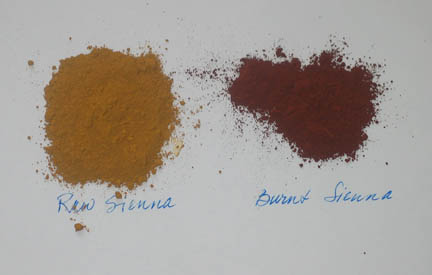 Burnt Sienna is an extraordinarily versatile and useful pigment. In use since antiquity, the siennas sometimes are grouped into the "brown" category, but they are far from plain old brown. With their iron oxide ingredients, they range from rich earthy reds to foreboding darks.
Burnt Sienna is an extraordinarily versatile and useful pigment. In use since antiquity, the siennas sometimes are grouped into the "brown" category, but they are far from plain old brown. With their iron oxide ingredients, they range from rich earthy reds to foreboding darks.
In earlier times, sienna was found in Siena, Italy and was known as terra di Siena, "earth of Siena." During the 1940s these mines were depleted, and nowadays the pigment deposits are found places such as Sardinia, Sicily, and the Appalachians.
Some of the mines date from the Precambrian period, roughly 4500 million years ago. Even though 7/8s of the Earth's history dates from this time, not much is known. It is thought that the earth was smothered in gases without oxygen for hundreds of millions of years. Oxygen was produced when evolving life forms developed photosynthesis.
The chemical reactions between iron and oxygen occurred until the supply of oxidizable surfaces were depleted. It was then that our modern high oxygen atmosphere began to develop. Rocks formed during this time contain massive bands of iron formations, and were laid down as iron and oxygen first combined. Thus came the sienna pigments, high in iron oxides, also known as ferric oxide.
During my research, I found this theory. About 4500 million years ago, "it is thought that the Earth itself coalesced from material in orbit around the sun and may have been struck by a very large (Mars-sized) planetesimal shortly after it formed, splitting off material that came together to form the moon."
Source: wikipedia
In other words, these are truly historic pigments!

Based on what I find on most other sites, Burnt Sienna is lighter, more rusty, than the deep brown of Raw Sienna. The sources I found indicated that the heating of the raw sienna evaporates most of the remaining moisture in the soil, and further oxidizes the iron in the soil. Since yours was the first site I went to off of Google, I thought you might want to investigate the discrepancy.
-L Daire